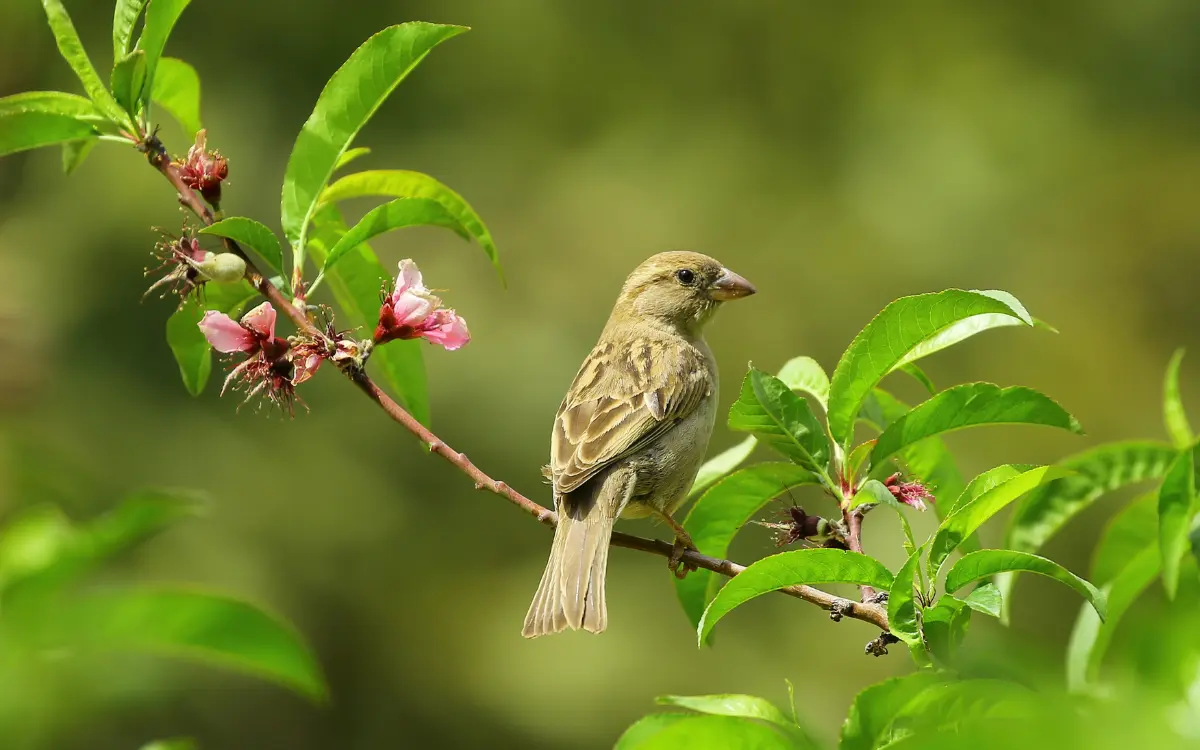If your live in Florida then you should watch some of the birds that you mostly see in your backyards with their colorful wings and habits.
Feeding birds is a good way to keep them back in your backyards. this article we will give you a complete guide about this bird, lets dive in.
12 List of Backyard Bird Watching in Florida
- Blue Jay – Recognizable by its blue plumage and loud calls.
- Mourning Dove – A common bird with a distinctive cooing sound.
- Carolina Wren – A small bird with a loud song, often found in shrubby areas.
- Northern Mockingbird – Known for its ability to mimic the songs of other birds.
- Red-bellied Woodpecker – Identified by its red cap and white belly with black bars.
- Northern Cardinal – A popular bird known for its bright red color and beautiful song.
- Tufted Titmouse – A small gray bird with a tufted crest on its head.
- American Robin – Often seen on lawns, known for its orange breast and melodious song.
- Common Grackle – A blackbird with a glossy iridescent body.
- Eastern Bluebird – A small bird with a bright blue back and rusty red chest.
- Painted Bunting – A colorful bird with a blue head, red underparts, and greenback.
- Brown Thrasher – A brown bird with a long tail and streaked chest, known for its varied song.
1.Blue Jay (Cyanocitta cristata):
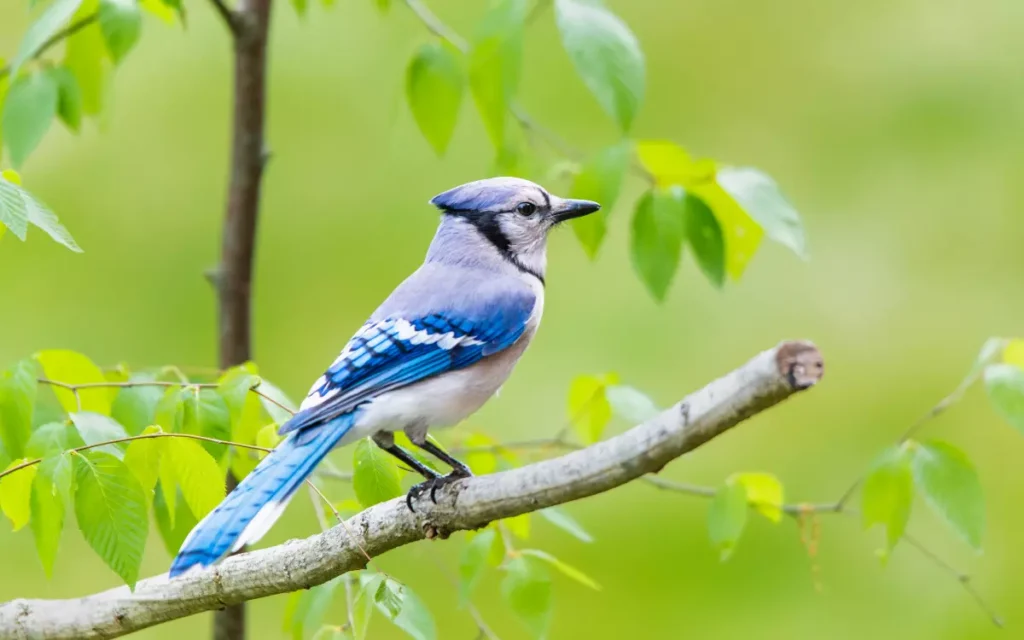
- Kingdom: Animalia
- Phylum: Chordata
- Class: Aves
- Order: Passeriformes
- Family: Corvidae
- Genus: Cyanocitta
- Species: Cyanocitta cristata
Blue Jays are striking birds with bright blue feathers and a white chest. They have a distinctive crest on their head and a black necklace-like pattern.
They enjoy a varied diet that includes seeds, nuts, fruits, and insects. Blue Jays are also known to store food for later use.
Their nests are built in trees using twigs, grass, and mud. A typical clutch consists of 4-5 eggs which are blue or light brown with spots.
- Length: 9.8 – 11.8 in (25 – 30 cm)
- Weight: 2.5 – 3.5 oz (70 – 100 gm)
- Wingspan: 13.4 – 16.9 in (34 – 43 cm)
2. Mourning Dove (Zenaida macroura):
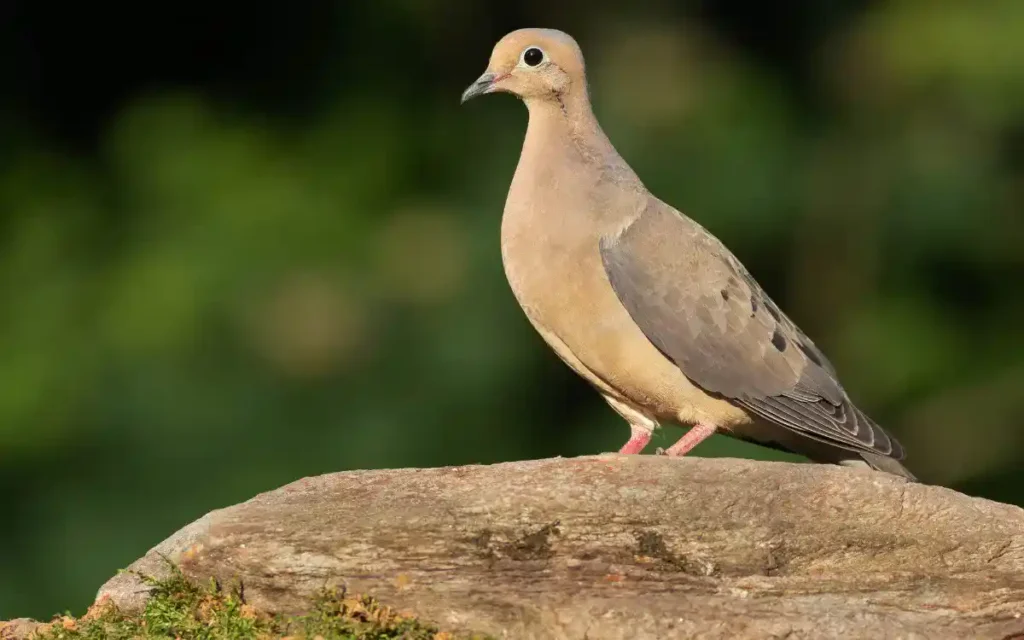
- Kingdom: Animalia
- Phylum: Chordata
- Class: Aves
- Order: Columbiformes
- Family: Columbidae
- Genus: Zenaida
- Species: Zenaida macroura
Mourning Doves are graceful birds with soft gray feathers and a distinctive cooing sound. They have long tails and small heads.
Their diet mainly consists of seeds, which they find on the ground. They also eat fruits and insects occasionally.
Mourning Doves build their nests in trees or on the ground using twigs and grass. They usually lay two white eggs. Both parents take turns sitting on the eggs to keep them warm.
- Length: 9.1 – 13.4 in (23 – 34 cm)
- Weight: 3.4 – 6.0 oz (96 – 170 gm)
- Wingspan: 17.7 in (45 cm)
3.Carolina Wren (Thryothorus ludovicianus):
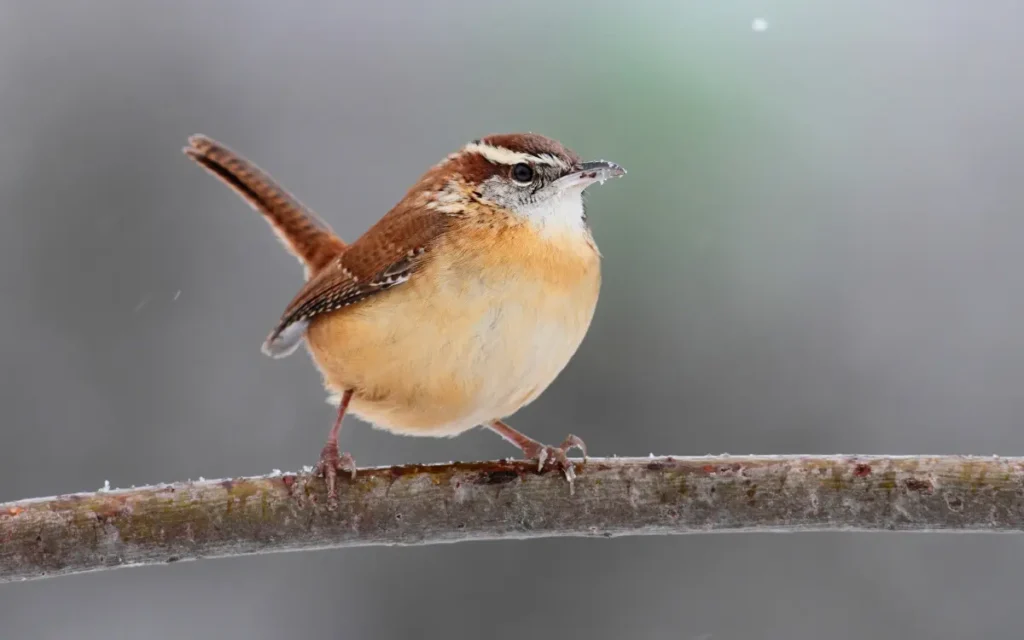
- Kingdom: Animalia
- Phylum: Chordata
- Class: Aves
- Order: Passeriformes
- Family: Troglodytidae
- Genus: Thryothorus
- Species: Thryothorus ludovicianus
Carolina Wrens are small birds with a round body and a long tail that they often hold upright. They have rich brown upperparts and a warm orange-buff color on their underparts.
Their diet mainly consists of insects such as beetles, caterpillars, and spiders. They also eat fruits and seeds.
Carolina Wrens build their nests in a variety of hidden spots like tree cavities, hanging plants, or even old boots! Their nests are made of twigs, leaves, and grass, and they usually lay 4-6 eggs.
- Length: 4.7 – 5.5 in (12 – 14 cm)
- Weight: 0.6 – 0.8 oz (18 – 22 gm)
- Wingspan: about 11.4 in (29 cm)
4. Northern Mockingbird (Mimus polyglottos):
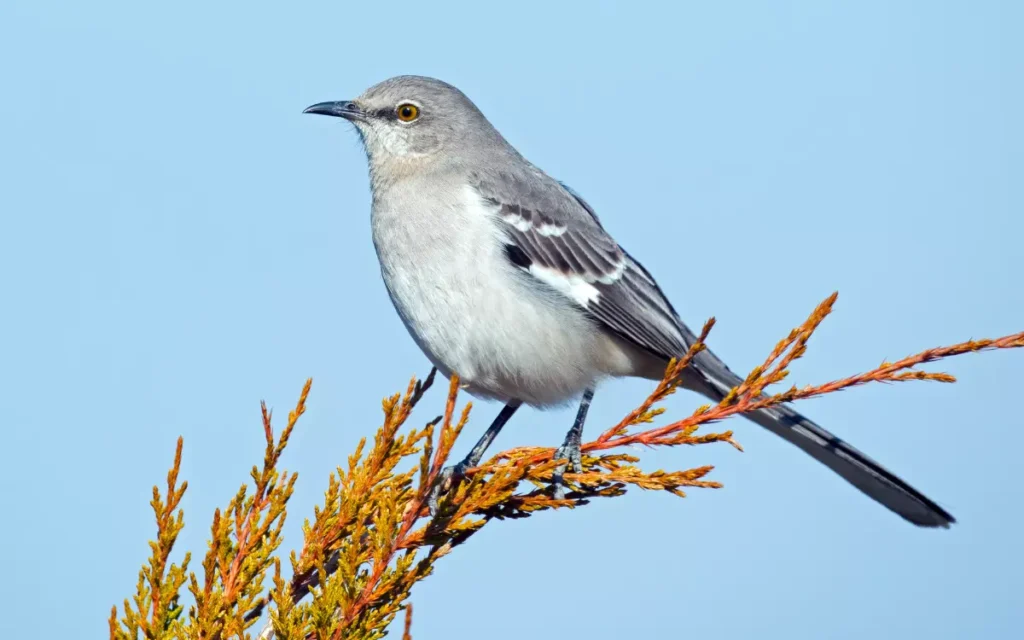
- Kingdom: Animalia
- Phylum: Chordata
- Class: Aves
- Order: Passeriformes
- Family: Mimidae
- Genus: Mimus
- Species: Mimus polyglotto
The Northern Mockingbird is a medium-sized bird with gray-brown feathers and a long tail. It’s famous for its ability to mimic the songs of other birds and even mechanical noises.
Northern Mockingbirds primarily eat insects and berries. They are often seen foraging on the ground or in bushes for their food.
These birds build their nests in trees or shrubs using twigs and grass. They lay 3-5 eggs per clutch. Mockingbirds are territorial and will fiercely defend their nests from intruders.
- Length: 8.3 – 10.2 in (21 – 26 cm)
- Weight: 1.4-2 oz (40 – 58 gm)
- Wingspan: 12.2 – 13.8 in (31 – 35 cm)
Read also: 6 Large black birds in Florida
5. Red-bellied Woodpecker (Melanerpes carolinus):
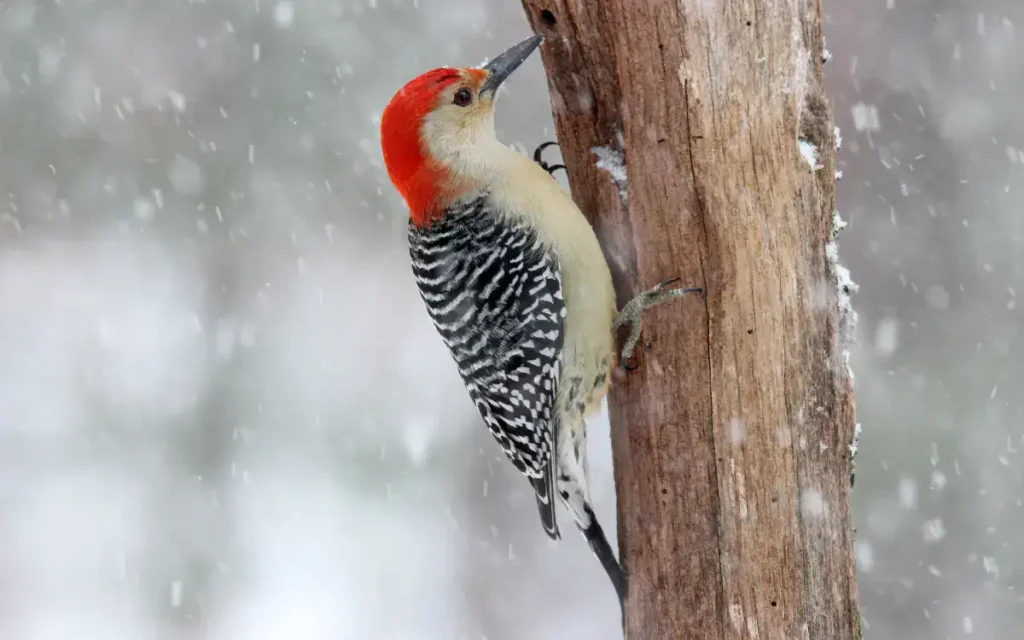
- Kingdom: Animalia
- Phylum: Chordata
- Class: Aves
- Order: Piciformes
- Family: Picidae
- Genus: Melanerpes
- Species: Melanerpes carolinus
The Red-bellied Woodpecker is easily recognized by its red cap and black-and-white barred back. Despite its name, the red on its belly is usually not very prominent.
These woodpeckers primarily eat insects, including beetles, ants, and tree borers. They also enjoy fruits, nuts, and seeds, and will visit bird feeders for these treats.
Red-bellied Woodpeckers excavate their nests in tree cavities, often in dead trees or branches.
They lay 4-5 eggs, and both parents share the duties of incubating the eggs and feeding the young.
- Length: 9.00 – 10.51 in (22.85 – 26.7 cm)
- Weight: 2.0 – 3.2 oz (57 – 91 gm)
- Wingspan: 15 – 18 in (38 – 46 cm)
6. Northern Cardinal (Cardinalis cardinalis):
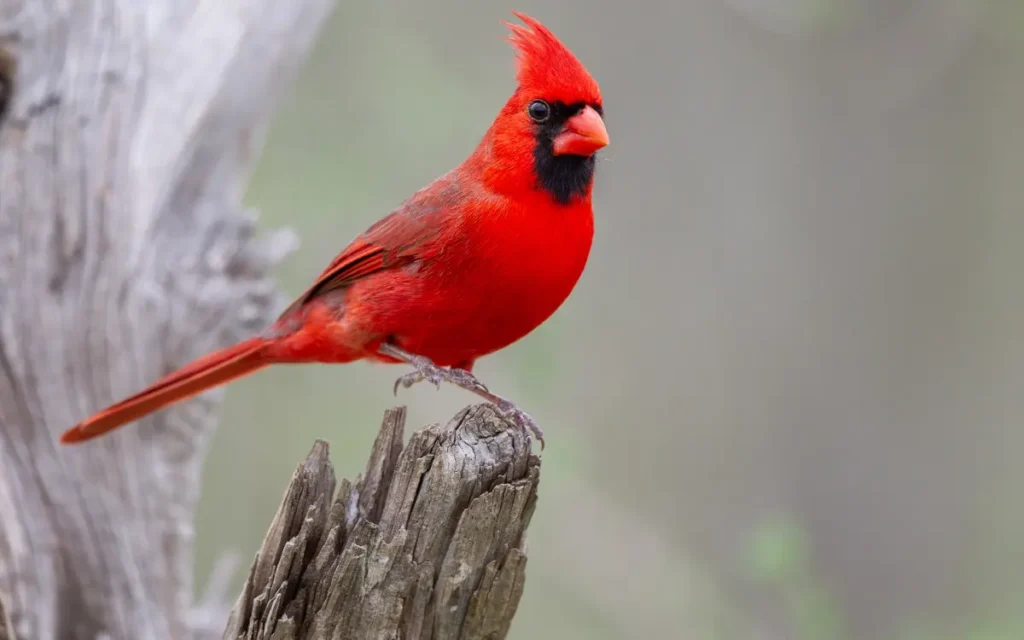
- Kingdom: Animalia
- Phylum: Chordata
- Class: Aves
- Order: Passeriformes
- Family: Cardinalidae
- Genus: Cardinalis
- Species: Cardinalis cardinalis
The Northern Cardinal is a bird with bright red feathers for males and brownish feathers with red accents for females. They have a distinctive crest on their head and a strong beak.
Cardinals mainly eat seeds, fruits, and insects. They are often seen at bird feeders enjoying sunflower seeds.
These birds build their nests in dense shrubs or low trees. They lay 3-4 eggs, and the female incubates them. Both parents feed the young cardinals.
- Length: 8.3 – 9.1 in (21 – 23 cm)
- Weight: 1.5 – 1.7 oz (42 – 48 gm)
- Wingspan: 9.8 -12.2 in (25 – 31 cm)
7. Tufted Titmouse (Baeolophus bicolor):
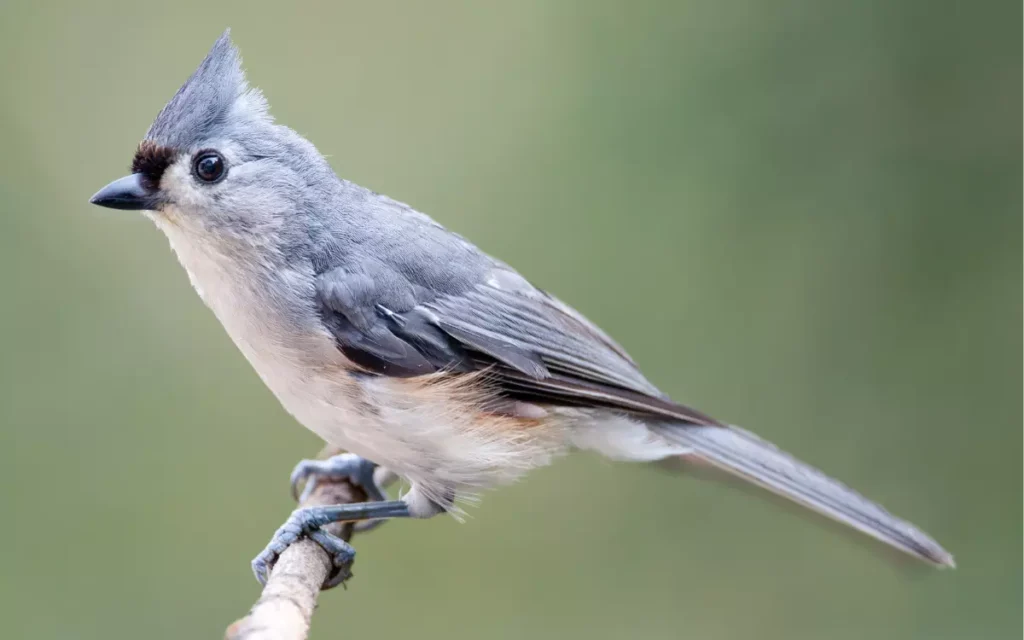
- Kingdom: Animalia
- Phylum: Chordata
- Class: Aves
- Order: Passeriformes
- Family: Paridae
- Genus: Baeolophus
- Species: Baeolophus bicolor
The Tufted Titmouse is a small bird with a gray back, white belly, and a tufted crest on its head. They have big black eyes and a short beak.
They eat mostly insects and seeds. In the winter, they also eat berries and nuts.
These birds make their nests in tree holes or nest boxes. They use soft materials like fur and feathers to line the nest. They lay 5-6 eggs.
- Length: 5.5 – 6.3 in(14 – 16 cm)
- Weight: 0.6 – 0.9 oz (17 – 26 gm)
- Wingspan: 7.9 -10.2 in (20 – 26 cm)
8. American Robin (Turdus migratorius):
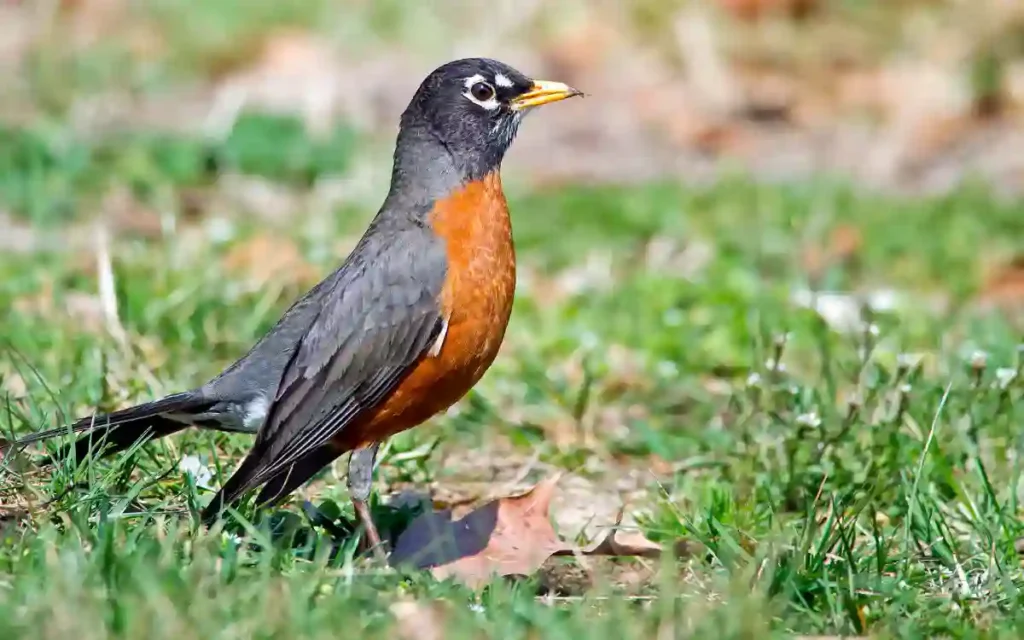
- Kingdom: Animalia
- Phylum: Chordata
- Class: Aves
- Order: Passeriformes
- Family: Turdidae
- Genus: Turdus
- Species: Turdus migratorius
The American Robin is a familiar bird with a bright orange-red breast, gray back, and white belly. They have a cheerful appearance and are known for their melodious song.
Robins mainly eat worms, insects, and berries. They are often seen hopping on lawns, searching for food.
These birds build their nests in trees or shrubs using grass and mud. They lay 3-5 blue eggs. Both parents take turns feeding the chicks.
- Length: 7.9 – 11.0 in (20 – 28 cm)
- Weight: 2.7 – 3.0 oz (77 – 85 gm)
- Wingspan: 12.2 – 15.8 in (31 – 40 cm)
9.Common Grackle (Quiscalus quiscula):
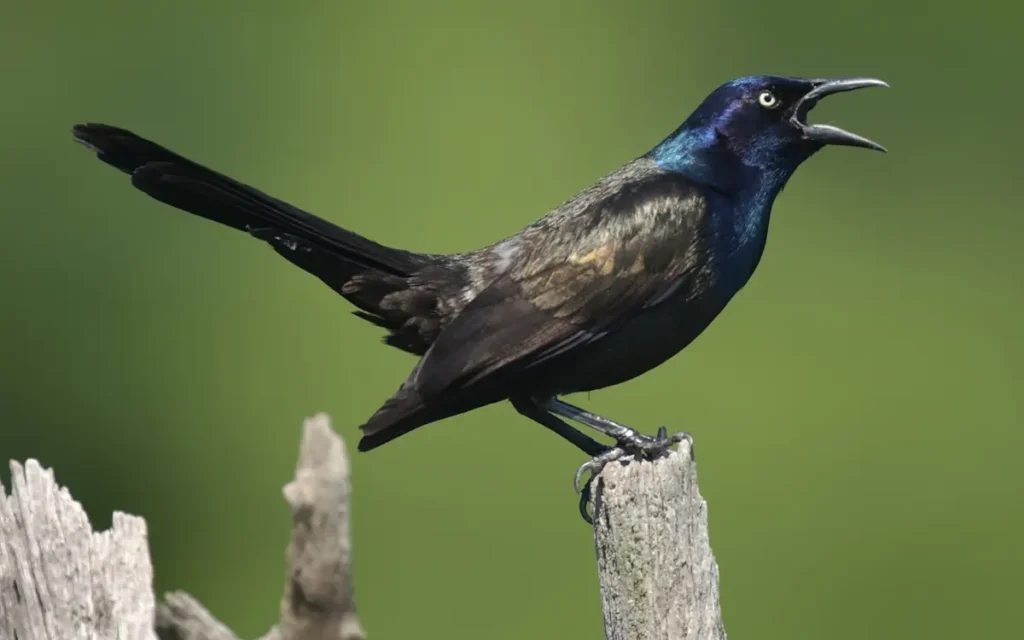
- Kingdom: Animalia
- Phylum: Chordata
- Class: Aves
- Order: Passeriformes
- Family: Icteridae
- Genus: Quiscalus
- Species: Quiscalus quiscula
The Common Grackle is a bird with iridescent black feathers that can appear blue or purple in the sunlight. They have a long tail and a sharp beak.
Grackles eat a variety of foods including insects, seeds, and fruits. They are often seen foraging on the ground or in trees.
These birds build their nests in trees or shrubs using twigs and grass. They lay 4-6 eggs. Grackles are known for their loud and harsh calls.
- Length: 11 – 13 in (28 – 34 cm)
- Weight: 2.6 – 5 oz (74 – 142 gm)
- Wingspan: 14 – 18 in (36 – 46 cm)
10. Eastern Bluebird (Sialia sialis):
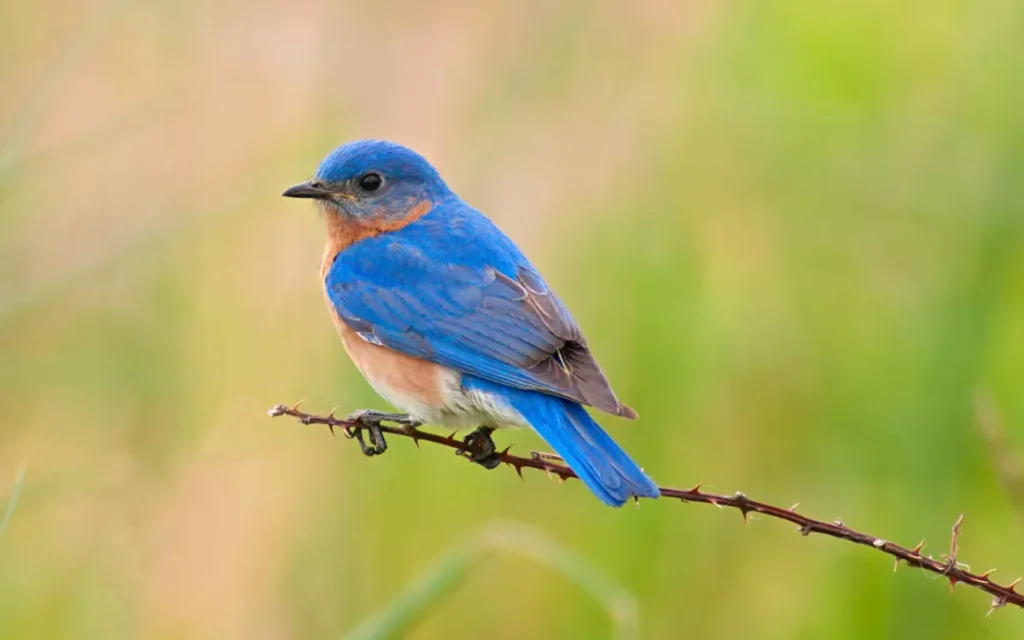
- Kingdom: Animalia
- Phylum: Chordata
- Class: Aves
- Order: Passeriformes
- Family: Turdidae
- Genus: Sialia
- Species: Sialia sialis
The Eastern Bluebird is a small bird with a bright blue back and rusty red throat and chest. They have a round shape and a short beak.
They primarily eat insects and berries. Eastern Bluebirds are known for catching insects in mid-flight or foraging on the ground.
These birds nest in tree cavities or nest boxes. They use grass and pine needles to build their nests. They lay 4-5 pale blue eggs.
- Length: 6.3–8.3 in(16–21 cm )
- Weight: 0.95–1.20 oz (27–34 gm)
- Wingspan: 9.8–12.6 in (25–32 cm)
Read also: 11 Types of Red Birds in Florida
11. Brown Thrasher (Toxostoma rufum):
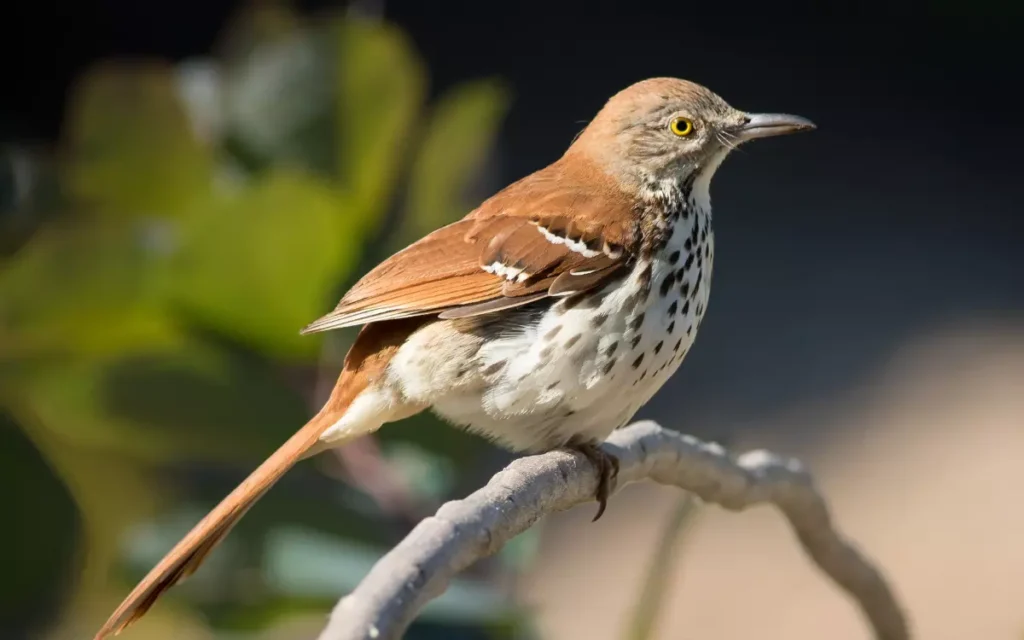
- Kingdom: Animalia
- Phylum: Chordata
- Class: Aves
- Order: Passeriformes
- Family: Mimidae
- Genus: Toxostoma
- Species: Toxostoma rufum
The Brown Thrasher is a bird with a reddish-brown back, streaked underparts, and a long tail. They have bright yellow eyes and a curved bill.
They mainly eat insects, fruits, and seeds. Brown Thrashers are known for their foraging skills, using their bills to dig through leaf litter.
These birds build their nests in dense shrubs or low branches using twigs and leaves. They lay 3-5 eggs which are usually blue or green with brown spots.
- Length: 9.1 – 11.8 in (23 – 30 cm)
- Weight: 2.1 – 3.1 oz (61 – 89 gm)
- Wingspan: 11.4 – 12.6 in (29 – 32 cm)
12. Painted Bunting (Passerina ciris):
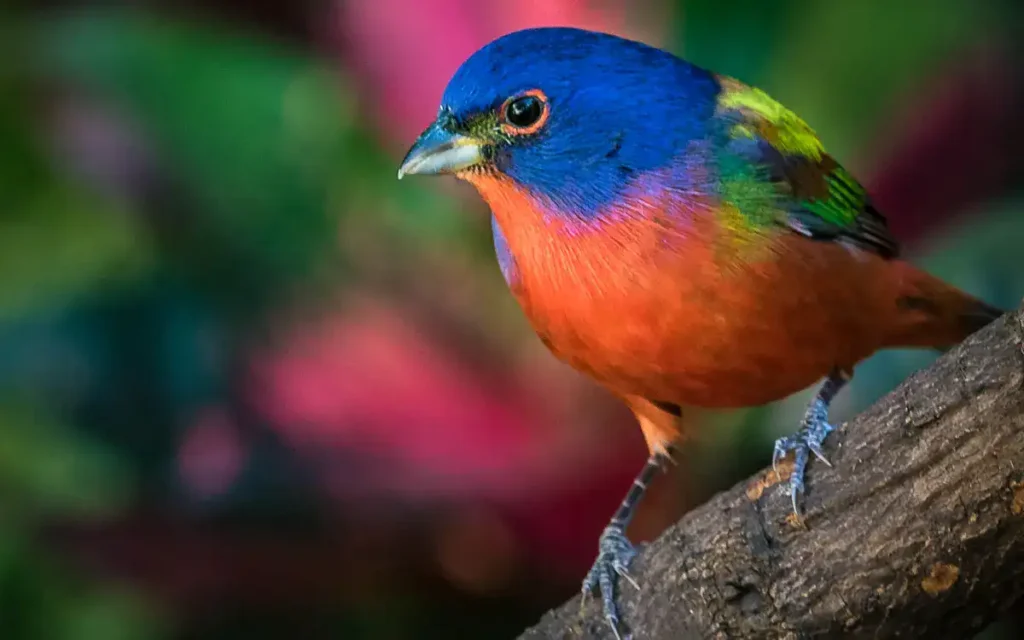
- Kingdom: Animalia
- Phylum: Chordata
- Class: Aves
- Order: Passeriformes
- Family: Cardinalidae
- Genus: Passerina
- Species: Passerina ciris
The Painted Bunting is a small bird known for its vibrant colors. Males have bright blue heads, greenbacks, and red underparts, while females are mostly green.
They primarily eat seeds, insects, and berries. Painted Buntings are often seen foraging on the ground or in low bushes.
These birds build their nests in dense shrubs or low branches, using grass and small twigs. They lay 3-4 eggs, which are white with brown markings.
- Length: 4.7–5.5 in (12–14 cm)
- Weight: 0.46–0.67 oz (13–19 gm)
- Wingspan: 8.3–9.1 in (21–23 cm)
FAQs:
Q: What is the most common Florida bird?
Ans: The Northern Cardinal is one of the most common backyard birds in Florida.
Q: What bird is only found in Florida?
Ans: The Florida Scrub-Jay is a bird species found only in Florida.
Q: What is the 4-foot bird in Florida?
Ans: The Sandhill Crane is a large bird in Florida that can stand up to 4 feet tall.
Q: What is a very small bird in Florida?
Ans: The Ruby-throated Hummingbird is one of the smallest birds found in Florida.
Q: What is the largest bird in Florida?
Ans: The American White Pelican is one of the largest birds in Florida, with a wingspan of up to 9 feet.
Q: How many types of birds are in Florida?
Ans: Florida is home to over 500 species of birds.
Q: What is the noisy bird in Florida?
Ans: The Blue Jay is known for being a loud and vocal bird in Florida.

